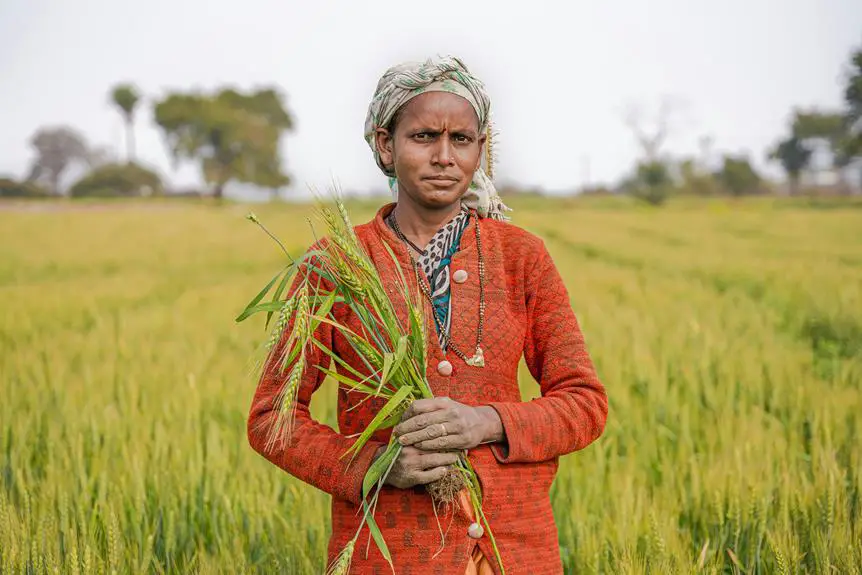When you consider Supima cotton farming, it's clear it plays a crucial role in boosting local economies. You'll notice how it creates jobs not just on farms, but also in retail and artisan sectors, fostering a sense of community. As farmers adopt sustainable practices, they attract eco-conscious consumers, which can further enhance demand. Yet, this industry isn't without its challenges, like unpredictable weather and rising costs. What innovative strategies might farmers employ to navigate these hurdles and sustain their economic impact? The answers could reshape the future of this vital sector.
Table of Contents
Overview of Supima Cotton
Supima cotton, known for its exceptional quality and softness, stands out as a premium cotton variety that you might find in luxury textiles. This cotton is grown exclusively in the United States and is recognized for its long, silky fibers, which contribute to its durability and ability to hold color better than regular cotton.
When you wear Supima cotton, you're experiencing a fabric that not only feels luxurious against your skin but also maintains its shape and sheen wash after wash.
The cultivation of Supima cotton involves meticulous farming practices that emphasize sustainability and environmental responsibility. Farmers use advanced techniques to ensure that this cotton thrives in the arid regions of the Southwest, where it's primarily grown.
You'll notice that Supima cotton products often come with a label certifying their authenticity, ensuring you're investing in a high-quality item.
In addition to its tactile benefits, Supima cotton supports local economies by providing jobs and promoting agricultural innovation. When you choose Supima, you're not just selecting a fabric; you're embracing a commitment to quality and supporting farmers dedicated to excellence in cotton production.
Economic Contributions to Local Communities
Supima cotton farming creates valuable job opportunities, boosting employment in your community.
As these jobs grow, local businesses benefit from increased demand for goods and services.
This ripple effect strengthens the local economy and fosters a vibrant community.
Job Creation Opportunities
Farming Supima cotton generates significant job creation opportunities, boosting local economies and providing livelihoods for many families in the community. As demand for this premium cotton increases, you'll find a range of roles arising in agricultural and related sectors. These positions not only improve individual lives but also strengthen the community as a whole.
Here are some ways Supima cotton farming creates jobs:
- Field Workers: From planting to harvesting, these essential hands ensure that the cotton is cultivated properly and efficiently.
- Processing Plant Personnel: Once harvested, cotton needs processing, requiring skilled workers in ginning and manufacturing facilities.
These job opportunities contribute to a more vibrant local economy, allowing families to thrive and ensuring a sustainable future.
Local Business Growth
Many local businesses thrive as a direct result of the economic activity generated by cotton farming, creating a vibrant marketplace that benefits the entire community. When cotton farmers invest in their operations, they often source equipment, supplies, and services from nearby shops. This infusion of cash supports everything from feed stores to hardware retailers, ensuring that your local economy remains robust.
Additionally, the demand for cotton leads to increased spending in restaurants, cafes, and entertainment venues as workers and farmers seek leisure activities after long hours on the field. This cycle of spending helps create jobs in these sectors, further enhancing community prosperity.
As cotton farming continues to grow, so does its influence on local businesses. You may notice more partnerships forming, such as farmers collaborating with local artisans to create unique cotton-based products. These collaborations not only diversify business offerings but also foster a sense of community pride.
In short, the economic contributions of Supima cotton farming to local businesses generate a ripple effect, enhancing the quality of life for everyone in the area and ensuring a prosperous future for all stakeholders involved.
Job Creation and Employment Opportunities
The cultivation of Supima cotton generates significant job opportunities in both rural and urban communities, boosting local economies and providing stable employment. As you delve into the world of Supima cotton, you'll find that its production supports a range of jobs across various sectors. This not only invigorates communities but also enhances the lives of many individuals.
Here are a few ways Supima cotton farming contributes to job creation:
- Farming and Harvesting: Local farmers and seasonal workers are essential for planting, maintaining, and harvesting the cotton crops.
- Processing and Manufacturing: Factories process the raw cotton into high-quality fabrics, creating skilled positions in manufacturing.
This interconnected ecosystem not only provides immediate employment but also fosters long-term career paths, especially in agronomy and textile technology.
Sustainable Farming Practices
Supima cotton farming not only boosts local economies but also embraces sustainable practices that protect the environment and ensure long-term viability. By adopting eco-friendly methods, farmers reduce their carbon footprint and conserve water, making this crop a responsible choice for our planet. You'll find that various techniques are employed, including crop rotation, integrated pest management, and organic fertilizers. These practices not only enhance soil health but also improve crop resilience.
Here's a quick look at some sustainable practices utilized in Supima cotton farming:
| Practice | Description |
|---|---|
| Crop Rotation | Alternating crops to improve soil fertility |
| Integrated Pest Management | Using natural predators to control pests |
| Organic Fertilizers | Utilizing compost and green manure for nutrients |
| Drip Irrigation | Targeted watering to reduce water waste |
| Cover Crops | Planting crops that protect soil between seasons |
Impact on the Textile Industry
Cotton farmers' commitment to quality Supima cotton significantly influences the textile industry, driving demand for luxury fabrics and sustainable production methods.
As a result, you're witnessing a shift in how brands approach their sourcing and production. The unique properties of Supima cotton, such as its softness, durability, and vibrant color retention, make it a sought-after material for high-end clothing.
This impact isn't just about the fabric itself; it shapes the entire industry. Here are three key ways Supima cotton is influencing textiles:
- Increased Demand for Quality: Consumers are becoming more discerning, seeking out products that offer superior craftsmanship and materials.
- Sustainability Initiatives: Brands are prioritizing sustainable practices, aligning with the eco-conscious values of their customers.
Challenges Faced by Farmers
Facing unpredictable weather patterns and rising production costs, farmers cultivating Supima cotton grapple with significant challenges that threaten their livelihoods. Extreme weather events, such as droughts and floods, can devastate crops, leading to financial losses. Additionally, the increasing prices of seeds, fertilizers, and labor put a strain on your budget, making it harder to maintain profitability.
Here's a closer look at some challenges you might encounter:
| Challenge | Description |
|---|---|
| Weather Variability | Unpredictable climate conditions affect yields. |
| Rising Input Costs | Higher prices for seeds, fertilizers, and labor. |
| Pest Management | Invasive pests require costly control measures. |
| Market Competition | Increased competition from other cotton types. |
| Water Scarcity | Limited water resources challenge irrigation efforts. |
These obstacles require careful planning and adaptation. You'll need to stay informed about market trends and invest in sustainable practices to mitigate risks. By addressing these challenges head-on, you can work toward securing a more stable future for your Supima cotton farming operations.
Future Prospects and Innovations
Innovative farming techniques and technological advancements are paving the way for a brighter future in the Supima cotton industry. As you look to the horizon, you'll find that these innovations not only enhance crop yield but also promote sustainable practices. The integration of precision agriculture, biotechnology, and eco-friendly farming methods can significantly transform how you cultivate and manage Supima cotton.
Here are some key innovations you should pay attention to:
- Precision Irrigation Systems: These systems optimize water usage, ensuring your crops receive the right amount of moisture while conserving resources.
- Genetic Engineering: Advances in biotechnology allow for the development of cotton varieties that resist pests and diseases, reducing the need for chemical inputs.
These advancements won't only improve the efficiency of Supima cotton farming but also position you to meet the growing demand for high-quality, sustainable textiles.
Frequently Asked Questions
What Is the History of Supima Cotton Farming in the U.S.?
You'll find that Supima cotton farming in the U.S. began in the 1950s, focusing on high-quality, extra-long staple cotton. It's been cultivated primarily in California, Arizona, and New Mexico, ensuring premium products for consumers.
How Does Supima Cotton Compare to Regular Cotton in Quality?
Supima cotton's quality surpasses regular cotton; it's softer, stronger, and more durable. You'll notice its luxurious feel and vibrant colors, making it a preferred choice for high-end textiles and garments that last longer.
Are There Specific Regions Where Supima Cotton Is Predominantly Grown?
Yes, you'll find that Supima cotton is predominantly grown in California, Texas, and Arizona. These regions provide the ideal climate and soil conditions, ensuring the high quality that distinguishes Supima from regular cotton.
What Are the Environmental Benefits of Growing Supima Cotton?
Growing Supima cotton offers environmental benefits like reduced water usage and lower pesticide requirements. You'll find it promotes biodiversity and soil health, making it a sustainable choice compared to conventional cotton farming practices.
How Can Consumers Support Supima Cotton Farmers Directly?
You can support Supima cotton farmers directly by purchasing products made from Supima cotton, advocating for sustainable practices, and spreading awareness about the benefits of this premium cotton. Your choices can make a significant impact!
- Caring for Vintage: How to Wash and Preserve 1970s Acetate Clothing - June 24, 2025
- Acetate vs. Acrylic Fabric: A Head-to-Head Comparison - June 24, 2025
- Is Acetate a Natural or Synthetic Fiber? The Semi-Synthetic Answer - June 24, 2025







